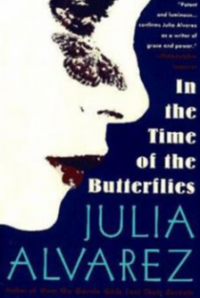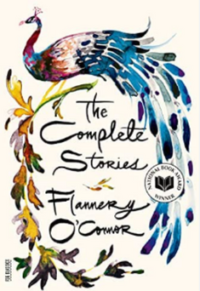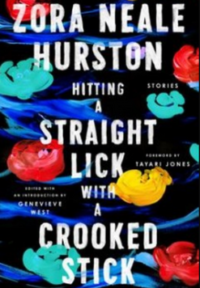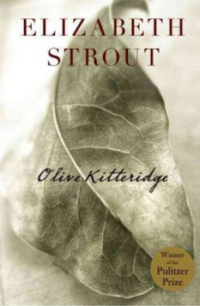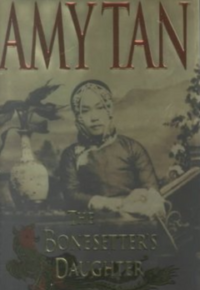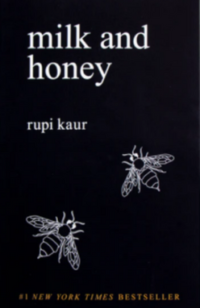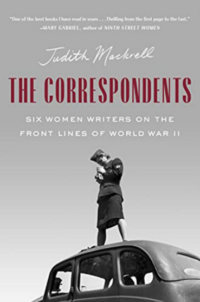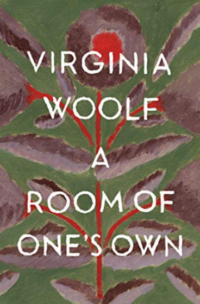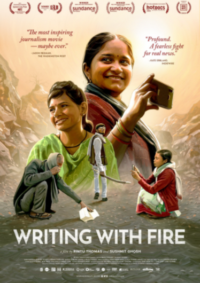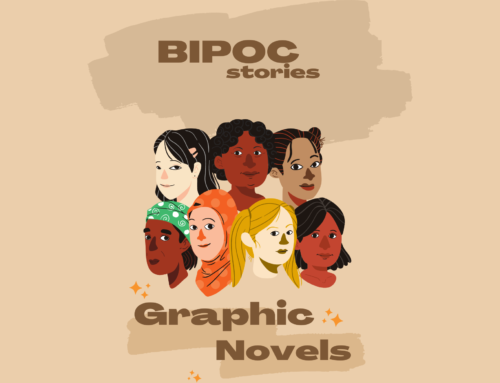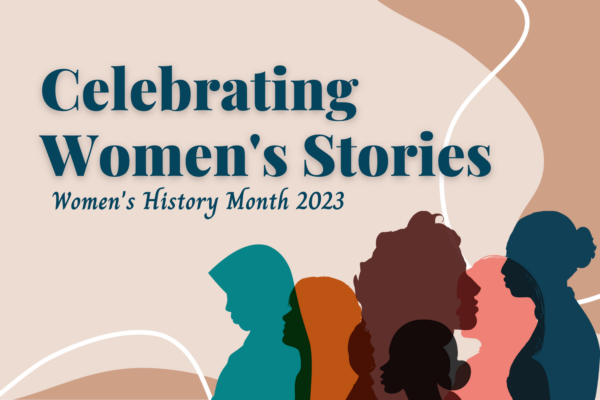
March is Women’s History Month, an annual recognition of the accomplishments of women who have shaped our nation. This year, we specifically recognize “Women Who Tell Our Stories.”
The library is the perfect place to discover stories from women across a variety of media. Below is a short list of selections to get you started!
Fiction
In the Time of Butterflies by Julia Alvarez
Set during the waning days of the Trujillo dictatorship in the Dominican Republic in 1960, this extraordinary novel tells the story of the Mirabal sisters, three young wives, and mothers who are assassinated after visiting their jailed husbands. On a deserted mountain road in the Dominican Republic in 1960, three young women from a pious Catholic family were assassinated after visiting their husbands who had been jailed as suspected rebel leaders. The Mirabal sisters, thus martyred, became mythical figures in their country, where they are known as Las Mariposas (the butterflies). Three decades later, Julia Alvarez, daughter of the Dominican Republic and author of the acclaimed How the Garcia Girls Lost Their Accents, brings the Mirabal sisters back to life in this extraordinary novel. Each of the sisters speaks in her own voice; beginning as young girls in the 1940s, their stories vary from hair ribbons to gun-running to prison torture. Their story is framed by their surviving sister, who tells her own tale of suffering and dedication to the memory of Las Mariposas.
The Complete Stories by Flannery O’Connor
Thirty-one tales depicting the humorous, if near tragic, conditions of life in the Deep South during the fifties.
Hitting a Straight Lick with a Crooked Stick: Stories from the Harlem Renaissance by Zora Neale Hurston
In 1925, Zora Neale Hurston was living in New York as a fledgling writer. This collection of stories, found in archives after her death, reveals African American folk culture in Harlem in the 1920s. This book includes eight of Hurston’s “lost” Harlem gems.
Olive Kitteridge by Elizabeth Strout
At the edge of the continent, in the small town of Crosby, Maine, lives Olive Kitteridge, a retired schoolteacher who deplores the changes in her town and in the world at large but doesn’t always recognize the changes in those around her.
The Bonesetter’s Daughter by Amy Tan
Set in contemporary San Francisco and in a Chinese village where Peking Man is unearthed, “The Bonesetter’s Daughter” is an excavation of the human spirit: the past, its deepest wounds, its most profound hopes. This is the story of LuLing Young, who searches for the name of her mother, the daughter of the famous Bonesetter from the Mouth of the Mountain. The story conjures the pain of broken dreams, the power of myths, and the strength of love that enables us to recover in memory what we have lost in grief.
Nonfiction
The Princess Diarist by Carrie Fisher
When Carrie Fisher recently discovered the journals she had kept during the filming of the first Star Wars movie, she was astonished to see what they had preserved–plaintive love poems, unbridled musings with youthful naiveté, and a vulnerability that she barely recognized. Today her fame as an author, actress, and pop-culture icon is indisputable, but in 1976, Carrie Fisher was just a teenager with an all-consuming crush on her co-star. With these excerpts from her handwritten notebooks, The Princess Diariest is Fisher’s intimate and revealing recollection of what happened on one of the most famous film sets of all time–and what developed behind the scenes … Fisher also ponders the joys and insanity of celebrity as well as the absurdity of a life spawned by Hollywood royalty whose lofty status has ultimately been surpassed by her own outer-space royalty.
Milk and Honey by Rupi Kaur
Milk and honey is a collection of poetry and prose about survival. About the experience of violence, abuse, love, loss, and femininity. The book is divided into four chapters, and each chapter serves a different purpose. Deals with a different pain. Heals a different heartache. Milk and honey takes readers through a journey of the most bitter moments in life and finds sweetness in them because there is sweetness everywhere if you are just willing to look.
The Correspondents: Six Women Writers on the Front Lines of World War II by Judith Mackrell
A gripping group portrait of six revolutionary women writers during World War II. “I am going to Spain with the boys,” Martha Gellhorn wrote. “I don’t know who the boys are, but I am going with them.” On the front lines of the Second World War, the lives of six remarkable women intertwined: Lee Miller, the Vogue cover model and photographer who lived in Paris as Man Ray’s lover before becoming a war correspondent for the magazine; Martha Gellhorn, the third wife of Ernest Hemingway and a novelist in her own right; Sigrid Schultz, an indisputably brave journalist who withstood surveillance, interrogation, and death threats in order to publish the truth from Berlin; Virginia Cowles, whose career as a ‘society girl columnist’ turned combat reporter began with an exclusive interview with Mussolini; Clare Hollingworth, who had almost no professional experience when she became the first correspondent to report the outbreak of World War II; and Helen Kirkpatrick, a reporter so admired by the military that at the order of General Eisenhower she was the first woman to report from an Allied war zone with equal privileges to men. The Correspondents paints a vivid, intimate, and nuanced portrait of these pioneering women, from chasing down sources to conducting clandestine love affairs. With her riveting and meticulous history, Judith Mackrell reconsiders the narrative of the war from a new perspective.
Invisible Women: Data Bias in a World Designed for Men by Caroline Criado-Perez
Data is fundamental to the modern world. From economic development to healthcare to education and public policy, we rely on numbers to allocate resources and make crucial decisions. But because so much data fails to take into account gender, because it treats men as the default and women as atypical, bias and discrimination are baked into our systems. And women pay tremendous costs for this bias, in time, money, and often with their lives. Celebrated feminist advocate Caroline Criado Perez investigates the shocking root cause of gender inequality and research in Invisible Women — diving into women’s lives at home, the workplace, the public square, the doctor’s office, and more. Built on hundreds of studies in the US, the UK, and around the world, and written with energy, wit, and sparkling intelligence, this is a groundbreaking, unforgettable exposé that will change the way you look at the world.
A Room of One’s Own by Virginia Woolf
A feminist manifesto by the great modernist writer contends that women’s literature would be on a par with that of men if women had the same levels of income, privacy, and experience as their counterparts. Her main illustration of this principle is a hypothetical sister to Shakespeare, who, even with the same talents as her brother, would have never been given a chance to display her talents to the world.
Documentaries
For Sama
The Frontline film is both an intimate and epic journey into the female experience of war. A love letter from a young mother to her daughter, the film tells the story of Waad al-Kateab’s life through five years of the uprising in Aleppo, Syria, as she falls in love, gets married, and gives birth to Sama, all while cataclysmic conflict rises around her.
He Named Me Malala
An intimate portrait of Malala Yousafzai, who was wounded when Taliban gunmen opened fire on her in Pakistan’s Swat Valley. The shooting of the then fifteen-year-old teenager sparked international media outrage. An educational activist in Pakistan, Yousafzai has since emerged as a leading campaigner for the rights of children worldwide and, in December 2014, became the youngest-ever Nobel Peace Prize Laureate.
Miss Representation
Discusses ways in which the media openly degrades women. Features commentary from many influential women in media and politics.
Writing with Fire
A fearless group of journalists maintains India’s only women-led news outlet. All from the Dalit caste, the women of Khabar Lahariya are preparing to transition the newspaper from print to digital while fighting for marginalized voices in the world’s largest democracy. The film chronicles the astonishing determination of these reporters as they redefine what it means to be powerful.

